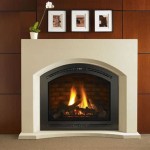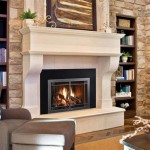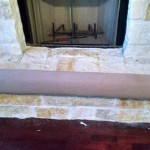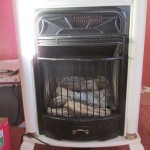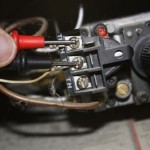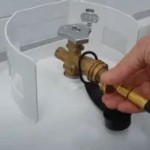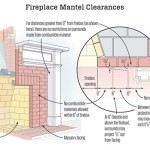Vanguard Ventless Gas Fireplaces: A Comprehensive Overview
Vanguard ventless gas fireplaces offer a convenient and efficient heating solution for many homes. Unlike traditional fireplaces that require a chimney or venting system, these units directly heat the air in a room, maximizing energy efficiency. This article delves into the workings of Vanguard ventless gas fireplaces, exploring their features, benefits, safety considerations, and installation requirements, providing a comprehensive understanding of this heating technology.
Ventless gas fireplaces, also known as vent-free fireplaces, operate by burning natural gas or propane within an enclosed firebox. The key distinguishing factor from vented fireplaces is the complete combustion process. Quality ventless fireplaces are designed to burn fuel so efficiently that the byproducts released into the room are minimal and within acceptable safety standards. This efficient combustion is achieved through advanced burner designs and oxygen depletion sensors.
The popularity of Vanguard ventless gas fireplaces stems from their ease of installation, cost-effectiveness, and the potential to add aesthetic appeal to a room. They can be installed almost anywhere a gas line is available or where a propane tank can be connected, offering flexibility in placement compared to traditional fireplaces. Furthermore, the absence of venting requirements translates to lower installation costs, making them an attractive alternative for homeowners looking to supplement their existing heating system or add a focal point to a room.
Key Features and Benefits of Vanguard Ventless Gas Fireplaces
Vanguard ventless gas fireplaces are built with a variety of features intended to enhance performance, safety, and user experience. Understanding these features is essential for making an informed decision about whether a ventless gas fireplace is the right heating solution.
One of the primary benefits is high energy efficiency. Because they don't require a chimney, heat is not lost up the flue. Most ventless gas fireplaces boast efficiency ratings of 99% or higher, meaning almost all the fuel burned is converted into heat for the room. This can translate into significant savings on heating bills, especially when used to supplement central heating.
Another key feature is the integrated Oxygen Depletion Sensor (ODS). This crucial safety component monitors the oxygen levels in the room. If the oxygen level drops below a predetermined threshold, the ODS automatically shuts off the gas supply to the fireplace, preventing the build-up of dangerous carbon monoxide levels. The ODS is a standard safety feature on all certified ventless gas fireplaces and is paramount to their safe operation.
Many Vanguard models come equipped with thermostatic controls, allowing precise temperature regulation. These thermostats automatically adjust the gas flow to maintain a consistent room temperature, improving comfort and energy efficiency. Some models offer programmable thermostats for even greater control, allowing users to set different temperature levels for different times of the day.
Aesthetic options are also a significant benefit. Vanguard offers a wide range of styles, sizes, and finishes to complement various décor preferences. Options include realistic log sets, decorative glass media, and various mantel designs. This allows homeowners to choose a fireplace that seamlessly blends into their existing interior design.
Safety Considerations for Ventless Gas Fireplaces
While ventless gas fireplaces offer numerous advantages, it is crucial to understand and address potential safety concerns. Proper installation and adherence to safety guidelines are paramount for ensuring safe and reliable operation.
Carbon monoxide (CO) poisoning is the most significant risk associated with ventless gas fireplaces. While modern units are designed to burn fuel efficiently, incomplete combustion can still produce CO. Proper ventilation is crucial, even though these units are designed to be vent-free. It is recommended to have a working carbon monoxide detector installed in the same room as the fireplace and on every level of the home. Regular testing of the CO detector is essential to ensure it is functioning correctly.
Adequate room size is another critical safety consideration. Ventless gas fireplaces are designed to heat specific room sizes. Operating a fireplace in a room that is too small can lead to oxygen depletion and a subsequent CO buildup. Manufacturers specify the minimum room size required for each model, and it is imperative to adhere to these recommendations. This information is typically found in the owner's manual and on the unit itself.
Only certified ventless gas fireplaces should be considered for purchase. Certification from organizations such as the American Gas Association (AGA) or the Canadian Standards Association (CSA) indicates that the fireplace has been tested and meets stringent safety standards. These certifications ensure that the unit has been designed and manufactured to minimize the risk of CO emissions and other potential hazards.
Regular maintenance is also vital. The fireplace should be inspected and cleaned annually by a qualified technician. This includes cleaning the burner, checking the ODS, and ensuring that all components are functioning correctly. Neglecting maintenance can lead to inefficient combustion and increased CO emissions.
Installation Requirements and Guidelines
Proper installation is paramount for ensuring the safe and efficient operation of a Vanguard ventless gas fireplace. While installation can be relatively straightforward, it is crucial to follow the manufacturer's instructions and local building codes.
Gas line connection is a critical aspect of the installation process. Depending on the model, the fireplace may require a natural gas or propane supply. A qualified gas technician should handle the gas line connection to ensure it is done safely and correctly. Incorrect gas line connections can lead to gas leaks and potentially dangerous situations.
Placement of the fireplace is also important. The unit should be placed on a non-combustible surface and away from flammable materials such as curtains, furniture, and paper. Clearances specified by the manufacturer must be adhered to. These clearances dictate the minimum distance between the fireplace and combustible materials to prevent fire hazards.
Adequate ventilation, while not requiring a traditional vent, is still essential. The room where the fireplace is installed should have sufficient natural air circulation to replenish oxygen levels. This can be achieved through operable windows or doors. Avoid using ventless fireplaces in tightly sealed rooms with limited air exchange.
Local building codes and regulations should always be consulted before installing a ventless gas fireplace. Some jurisdictions may have restrictions on their use or require specific permits. Compliance with local codes ensures that the installation meets all applicable safety standards.
Professional installation is highly recommended, particularly for individuals without experience working with gas lines and appliances. A qualified installer will have the necessary knowledge and tools to ensure the fireplace is installed safely and correctly, minimizing the risk of problems or hazards in the future.
In summary, Vanguard ventless gas fireplaces offer a practical and efficient heating solution when installed and operated correctly. By understanding the key features, safety considerations, and installation requirements outlined in this article, homeowners can make informed decisions and enjoy the warmth and ambiance of a gas fireplace safely and responsibly.

Vanguard Vent Free Classic Fireplace

Vanguard Compact Gas Fireplace System

Vanguard Converts Your Old Wood Burning Fireplace Into An Efficient Vent Free

Vanguard Vintage Oak Vent Free Gas Logs

Vanguard Golden Oak Vent Free Gas Logs

Vanguard Vent Free Gas Log Heaters

Vanguard Vintage Oak Multi Sided Vent Free Dual 27 In Gas Logs

A Ventless Gas Fireplace Is Liability Energy Vanguard
Classic Hearth Vent Free Gas Fireplace Systems

Vanguard Vent Free Gas Fireplace System
Related Posts

